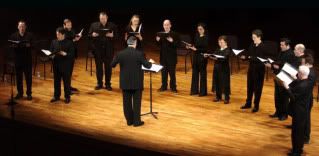Craig Jackson, Damn the Roses
Music is a funny, time-twisting business. With five albums to his name, Craig Jackson just got nominated for "Best New Band" in Nashville's Toast of Music City Awards.
Though Jackson's sound is commonly described as "Americana," at times it can suggest Tom Petty and Don Henley and 1970s-80s heartland rock as much as it does the polished but back-to-basics sound of Lucinda Williams and Jim Lauderdale. Too, Jackson's youthful, slightly scratchy voice is more typical of pop and alt-rock than of traditional country and Americana. Still, beginning with the second track, "Everytime You Leave," he slides into modern (but not "commercial") country music territory.
These terms, of course, are labels, and as such fairly unimportant. His voice, whatever "type" you call it, gives his arrangements a warm glow and a melded softness that carries through pretty much the whole disc. In general, these songs take their time, maintaining laid-back but emotionally potent moods. Highlights include the war story "1941," the keening title track, and the catchy pop of "Simple."
The Iveys, The Iveys
These Iveys are a band of three young siblings out of West Texas, not the now-obscure 1960s Iveys that evolved into Badfinger. But there is something pleasingly retro in their focus on thoughtful pop songwriting and glittering vocal harmonies.
The catchy soft-rock nuggets "Leave It To Love" and "Going the Right Way" are the best tracks on this eight-song disc; the single, "Back When It Was Our World," is solid too, though, to my ear, not quite as inspired. The slower tunes, like "The Promise," "Whispered Words," and the meandering "Your Love Now," though bedded in fragrant arrangements and decorated with sweet, nicely understated harmonies, don't have the pop flair of the more upbeat tracks. I suspect that as the Iveys' lyric-writing matures the emotional impact of their music will become more consistent.
Despite my reservations, this is a promising debut from a group that could, as likely as anyone, emerge as a Fleetwood Mac for the new century – without the messy divorces.
Bobby Long, Dirty Pond Songs
Staying on the youth tip, here comes Bobby Long. I almost didn't listen to this CD. The black-and-white sensitive-boy cover shot, the Myspace provenance, and above all, the fact that Long, still a London college student, had become known only because Robert Pattinson sang a mush-mouthed version of a song Long co-wrote in the movie Twilight – all these factors suggested that this was overhyped fluff.
Hyped, yes. Fluff, not so much. With raw vocal power and smart, evocative lyrics, Long is a folksinger with a spirited intensity that puts him outside and above the masses of singer-songwriters roaming our cities, towns, and social networks.
His original voice comes through in a combination of factors. One is his solid guitar playing, which takes a lot from the hard-strummed sound of the early folk-pop crafters like Bob Dylan and Dave Cousins. A more unusual factor is that, unlike most modern songwriters, Long seems to really like language, layering and intertwining his thoughts and images. Meanwhile, echoes of Nick Cave and David Bowie and Leonard Cohen shoot through his melodies, though many of the songs are rooted in real traditional folk idioms (think the Child Ballads).
Long's debt to traditional and Dylan-esque folk is evident in "Who Have You Been Loving," where detailed imagery in the verses alternates with a repeated one-line chorus – but with the composition juiced up by delaying that chorus. "The Bounty of Mary Jane" resembles an old, sad ballad: "I will fall upon this town / To call your name, my sweet suffragette / my sweet Mary Jane." Songs like the waltzing "Being a Mockingbird" would fit right into an Americana playlist today, but Long's undisguised working-class British accent reminds us, as Billy Bragg did, how the American Appalachian music tradition is deeply rooted in ballads from the British Isles.
Some parts of some songs don't always seem to quite make sense together, but, because Long sings with such an honest tone, the discontinuities mostly serve to hold the listener's interest. The melody of "Penance Fire Blues" at first echoes Bowie's "Jean Genie" and the song (coincidentally?) contains yet another curious mention of "suffragettes." Then it resolves into a cry to "let me run" and a worry about finding one's feet.
Though the songs don't always hang together, and a few are forgettable, this is a perceptive and rich collection. "I'm afraid to die," Long writes in "Left to Lie," the most powerful track on the disc: "I'm nearly old / I'm almost young / So I'm told." Shades of Dylan's My Back Pages, yes, but clinging to and building on those hoary roots in his own way. The CD will be released shortly via Long’s Myspace page, where several singles are already available including “The Bounty of Mary Jane.”
 Appropriately, the set is a circle, both cagelike and circusy. Coiling through is the serpent, evoked by Davon Rainey, who also delivers several interesting and illuminating (and highly crowd-pleasing) drag numbers.
Appropriately, the set is a circle, both cagelike and circusy. Coiling through is the serpent, evoked by Davon Rainey, who also delivers several interesting and illuminating (and highly crowd-pleasing) drag numbers.





